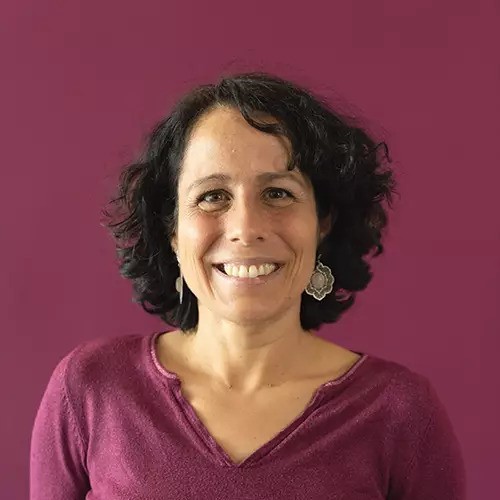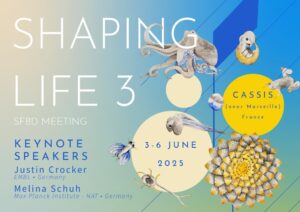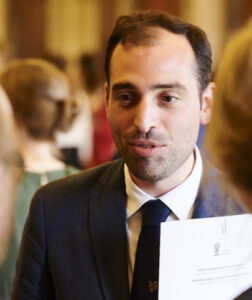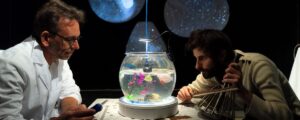Can you tell us about your background and what motivated you to join the IBDM?
I joined Thomas Lecuit’s team in 2002 for a summer internship during my undergraduate studies to work on the mechanisms controlling epithelial morphogenesis in the Drosophila embryo. I stayed there until 2009, after defending my thesis! I then went to New York as a post-doc in Claude Desplan’s team at NYU to study the mechanisms that generate neuronal diversity in the optic lobes of Drosophila. After our post-doc, my husband and I decided to return to France, and the IBDM was the institute that motivated us most in terms of the topic and the working environment. I didn’t want to lead a team, so I decided to discover a new model/thematic organisation. So, in 2016, I joined Pascale Durbec’s team as a CNRS researcher to study the changes in cell fates that contribute to myelin repair in the mouse brain. Since 2018, I am back in Thomas Lecuit’s team.
What scientific result were you particularly pleased with and why?
During my post-doc, we were trying to understand the origin of the diversity of neurons in the optic lobes of Drosophila. Our preferred hypothesis was that the precursors of these neurons express a set of transcription factors that define temporal windows during which specific subtypes of neurons are generated.
To test this hypothesis and identify these factors, I and two other postdocs in the team collected all the antibodies against Drosophila transcription factors available in the lab and in neighbouring institutes. We ran hundreds of labels! This somewhat brutal, blind approach paid off: we were able to identify 5 factors that are sequentially expressed in the precursors and show that they are indeed at the origin of the generation of neuronal diversity in the optic lobes. We didn’t expect it to work that well and it was very satisfying 🙂
What are you currently working on?
Right now I’m trying to understand how the unique shape of each neuron subtype is generated during development. It’s a collaboration between biologists, physicists and mathematicians.
We have developed approaches that allow us to film the morphogenesis of two subtypes of mechanosensory neurons in vivo in Drosophila embryos and to extract/measure from these films the dynamic growth parameters of their arborisations (branch extension and retraction rates, branching rate, probability of switching from extension to retraction, etc.). By analysing and comparing these parameters, we have two objectives: (i) to define growth rules for each of these subtypes and (ii) to determine how the genetic heritage and the environment of these neurons influence these rules.
What do you like most and least about your job?
I like the thinking, the interaction with my colleagues and the intellectual freedom that this job gives me. The fact that you’re always learning and discovering new things. What I don’t like is the fact that you often have to be very patient, which is not my strong point.
If you had to adopt a motto to guide your career, what would it be?
Don’t hesitate to take on new challenges and have fun.
If you had to associate your job with a genre of film, such as horror, comedy, drama, etc., as well as a specific film (e.g. Frankenstein), which one would you choose and why?
I’d say we go through just about every genre, depending on the day and the stage of our career.
What recent scientific discovery are you most excited about and why?
It’s not very recent, but I recently read that certain carnivorous plants can count to five. These plants are equipped with mechanosensing hairs that emit an action potential when touched. The plant can ‘count’ these potentials, allowing it to approach its prey at the right moment and secrete enzymes to digest it. I find it interesting that these plants don’t have a nervous system as such, but have developed similar strategies.
There are also zombie spiders, which are reprogrammed by parasitic wasps to weave a web that forms a cocoon so that their larvae can grow and… eat the spider! But that scares me more than it excites me.
If you had to choose a superpower based on a scientific phenomenon, what would it be and how would you use it?
The ability to repair and regenerate my damaged cells ad infinitum so that I can live in good health for as long as possible. There are so many things to research… If I could combine that with fingers that look like gecko paws, I’d also be able to climb the most beautiful cliffs in the world without a care in the world ^^.
If you were a laboratory tool, what would you be?
A microscope to see the infinitely small.
What are your favourite hobbies or pastimes?
Sitting on cliffs overlooking the water or in the mountains! More generally, being outdoors and spending time with my children and friends.




